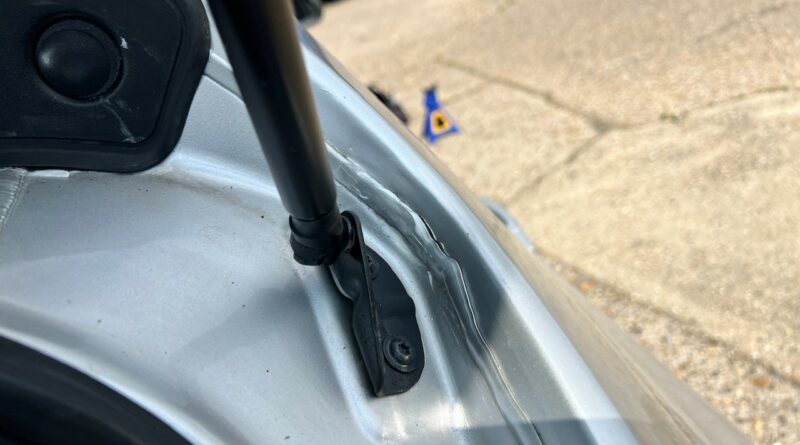The Importance of Automotive Seam Sealant
Automotive seam sealant plays a critical role in protecting vehicles from moisture, dust, and air leaks. Its primary function is to seal gaps and joints in the car’s body panels, thus preventing rust and corrosion. However, improper application or failure of seam sealant can lead to significant damage. This article delves into the importance of seam sealant, common issues related to sealant failure, and best practices for application and maintenance.
Consequences of Sealant Failure
Sealant failure can be disastrous for any vehicle. For instance, a car stored in damp conditions for several decades without proper seam sealing may experience severe rust damage. When seam sealant lifts, it allows water to enter spot welded seams through capillary action, leading to rust that can ruin the seams and necessitate the replacement of entire panels.
- Rust and Corrosion: Inadequately sealed seams are vulnerable to moisture, which can lead to rust and weaken the structural integrity of the vehicle.
- Structural Damage: Continuous exposure to moisture can cause extensive damage to body panels and structural components, often requiring expensive repairs.
- Increased Maintenance Costs: Regularly replacing damaged panels or dealing with rust issues can significantly increase maintenance costs.
Identifying and Preventing Sealant Failure
- Regular Inspection: Routinely check the sealant for signs of lifting or deterioration, especially in areas prone to moisture exposure.
- Timely Replacement: Replace old sealant (typically more than 20 years old) or any sealant showing signs of wear. Old sealant can be removed using a scraper and a hot air gun.
- Thorough Cleaning: Before applying new sealant, ensure that the area is clean and free of rust, dirt, and grease. This ensures better adhesion and longevity of the sealant.
Best Practices for Applying Seam Sealant
- Preparation: Clean the surface thoroughly and apply a suitable primer, such as self-etch or zinc primer, to enhance adhesion.
- Neat Application: Apply polyurethane (PU) sealant using a sealant gun. PU sealants are durable and over-paintable but require precise application as they are not sandable.
- Smoothing the Sealant: Smooth the sealant bead using a finger dipped in paint thinners, or a brush, to ensure a clean finish and effective sealing.
- Complete Coverage: Ensure that all seams and panel joints are adequately sealed. Even small gaps can allow water to penetrate and cause rust.
Choosing the Right Sealant
- Polyurethane (PU) Sealant: Preferred for its durability and strong adhesion, PU sealant is ideal for areas requiring long-lasting protection.
- Brushable Seam Sealant: A cost-effective alternative, brushable seam sealant is easier to apply and sandable but less durable than PU sealant.
- Silicone Sealant: Avoid using silicone sealants as they are not over-paintable and can contaminate other panels, making them non-paintable.
- Ribbon Sealant: Useful for sealing body shells to chassis or door liners to door frames, ribbon sealant comes in rolls with paper backing and is ideal for areas where cleanup is difficult post-application.
- Sprayable Seam Sealer: Commonly used by manufacturers for its quick application, but requires expensive applicator equipment, making it less feasible for DIY projects.
Practical Application Tips
- Inside Wheel Arches and Underbody: Apply seam sealant generously in these areas to prevent water ingress through pinholes in welds or panel joints.
- Joining Wings: Seal gaps between body panels such as wings to prevent water from getting trapped and causing rust.
- Overpainting: If the sealant has been smoothed with a solvent, it should over-paint well, ensuring a seamless and protected finish.
Conclusion
Automotive seam sealant is indispensable for maintaining the structural integrity and longevity of a vehicle. Proper application and regular maintenance can prevent costly damage from rust and corrosion. Whether you’re a professional in an auto body shop or a DIY enthusiast, understanding the importance of seam sealant and following best practices can help keep your vehicle in top condition.
Buying a used VW. Buying used vauxhall, BMW, Jaguar, Ford, Volvo, Range rover, Bentley, Aston Martin, Porsche, Ferrari, Lamborghini, Maserati, Hyundai, Tesla, Honda, Pagani

